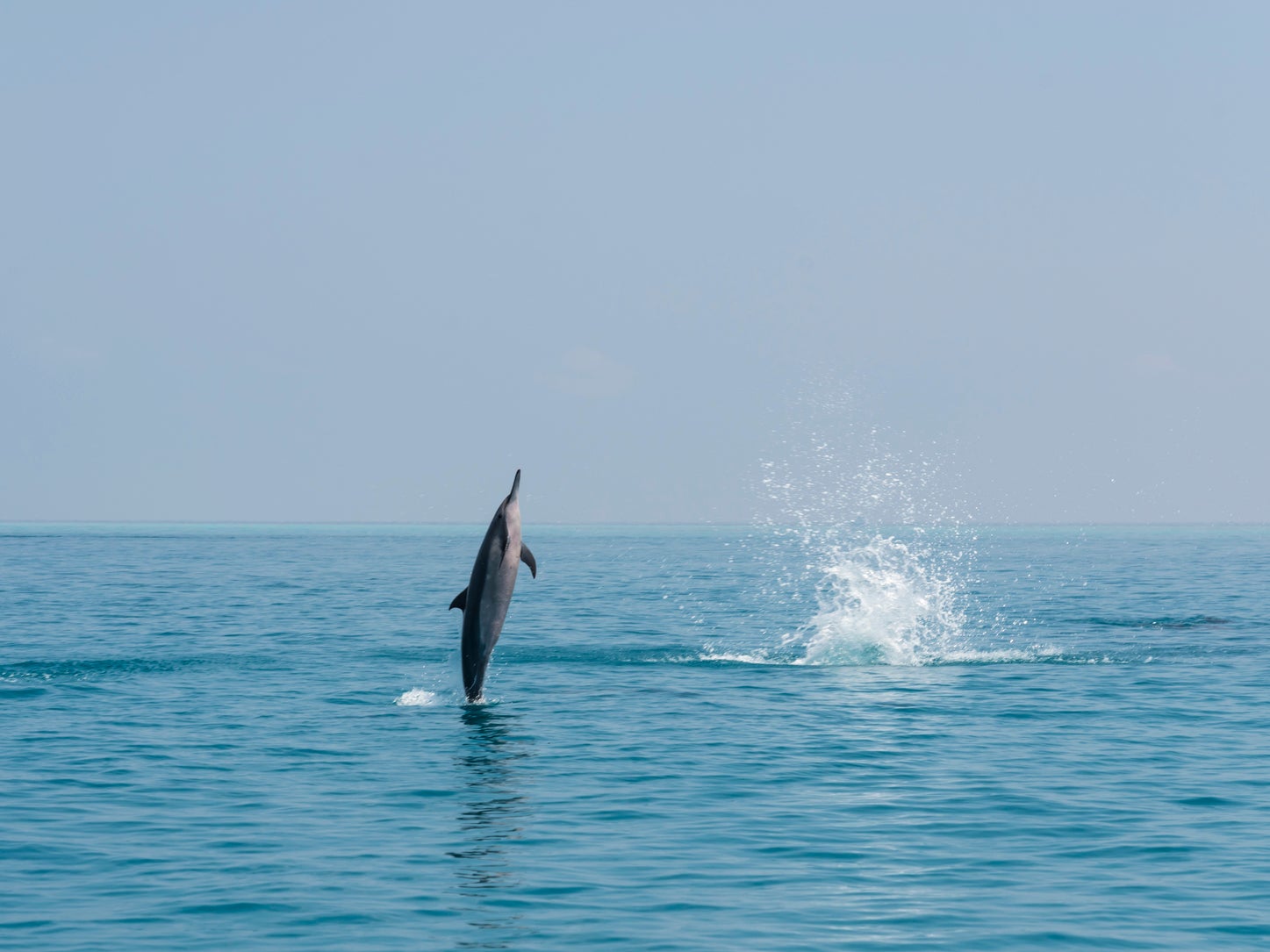Almost 90% of dolphins in Indian Ocean wiped out by fishing industry, study suggests
Gillnets used by tuna fishers blamed for deaths of millions of cetaceans over last 40 years

Your support helps us to tell the story
From reproductive rights to climate change to Big Tech, The Independent is on the ground when the story is developing. Whether it's investigating the financials of Elon Musk's pro-Trump PAC or producing our latest documentary, 'The A Word', which shines a light on the American women fighting for reproductive rights, we know how important it is to parse out the facts from the messaging.
At such a critical moment in US history, we need reporters on the ground. Your donation allows us to keep sending journalists to speak to both sides of the story.
The Independent is trusted by Americans across the entire political spectrum. And unlike many other quality news outlets, we choose not to lock Americans out of our reporting and analysis with paywalls. We believe quality journalism should be available to everyone, paid for by those who can afford it.
Your support makes all the difference.A damning new report by an international group of scientists indicates the dolphin population of the Indian Ocean has been decimated, with almost 90 per cent of the animals wiped out by industrial fishing since 1980.
The study suggests this extraordinary extermination is due to the widespread use of huge gillnets used to catch tuna.
Gillnets are walls of netting that are hung in the water column and are either allowed to drift from floating buoys, or can be fixed in one place. They range in size from 100m to more than 30km in length, and operate from less than 5m to more than 20m in depth.
Their use is illegal on the high seas, but the laws are routinely ignored.
The size of the holes in the netting are designed so tuna can get only their head through the netting but not their whole body. The fish’s gills then become caught in the mesh as it tries to back out of the net. As the fish struggles to free itself, it becomes more and more entangled.
Though the nets are designed to target specific species — as smaller fish can slip through the holes and larger fish are supposedly repelled — in practice the nets, particularly drift gillnets, are deadly to an array of species, including sharks, turtles, sea lions, whales and dolphins.
Dr Putu Mustika, from James Cook University in Australia, who was among the scientists working on the study, said despite much of the official data on bycatch being unreliable, scientists had nonetheless been able to come up with a credible picture of the dolphin catch.
“We combined results from 10 bycatch sampling programmes between 1981 and 2016 in Australia, Sri Lanka, India and Pakistan to estimate bycatch rates for cetaceans (whales, dolphins and porpoises) across all Indian Ocean tuna gillnet fisheries,” she said.
“The vast majority of the cetacean bycatch is dolphins. Estimated cetacean bycatch peaked at almost 100,000 a year during 2004−2006, but has declined to 80,000 animals a year, despite an increase in the tuna gillnet fishing effort.”
Dr Mustika said the research indicated the gillnets deployed in the Indian Ocean had killed about 4.1 million small cetaceans between 1950 and 2018 as fishers pursued tuna.
But she said the true figures may be “substantially higher” as the available records take little or no account of factors such as delayed mortality of cetaceans which escape from the nets or mortality associated with ghost nets — those nets lost at sea.
“The declining cetacean bycatch rates shown by what we can measure suggest current mortality rates are not sustainable. The estimates we have developed show that average small cetacean abundance may currently be 13 per cent of the 1980 levels,” Dr Mustika said.
She warned the UN’s existing ban on gillnets on the high seas is hard to enforce and tuna fishers are allowed to use gillnets within the territorial waters of states bordering the ocean.
“Cetacean bycatch in Indian Ocean tuna gillnet fisheries has been a concern for decades but has been poorly studied, reflecting the political reality that hundreds of thousands of relatively poor fishermen and their families rely on gillnet fisheries,” she said.
The current cetacean bycatch rate may be in the order of 175 cetaceans per 1000 tonnes of tuna, down from an estimate of 600 in the late 1970s, the study suggested.
The countries with the largest current gillnet catches of tuna and likely to have the largest cetacean bycatch are (in order): Iran, Indonesia, India, Sri Lanka, Pakistan, Oman, Yemen, UAE and Tanzania.
Iran and Indonesia have no national monitoring of cetacean bycatch.
The research team was led by Dr Charles Anderson of the Manta Marine organisation in the Maldives. The scientists said there is a need for improvements in monitoring, analysis and governance and for changes to fishing practices if dolphin numbers are to recover.
Join our commenting forum
Join thought-provoking conversations, follow other Independent readers and see their replies
Comments